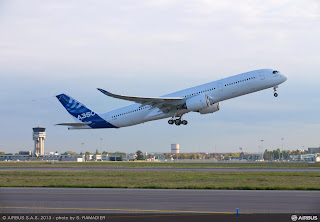
Recently a commercial large jet was cleared for an ILS
approach to Runway 28 at Chicago O’Hare airport. While inbound to intercept the
Glide slope, the cockpit indications were initially full up. Abruptly the
display changed from full up to full down position and the aircraft pitched
down and descended to stay on the glide slope. The pilot reacted to disconnect
the autopilot, but not before the aircraft had descended a 100 ft. The display restored
to full up deflection soon thereafter.
This anomaly
was most likely caused by disruption of the Glide slope signals caused by a
large cargo aircraft holding for take-off. ATC controller had advised the crew
of this aircraft that they were not required to protect the ILS critical area.







